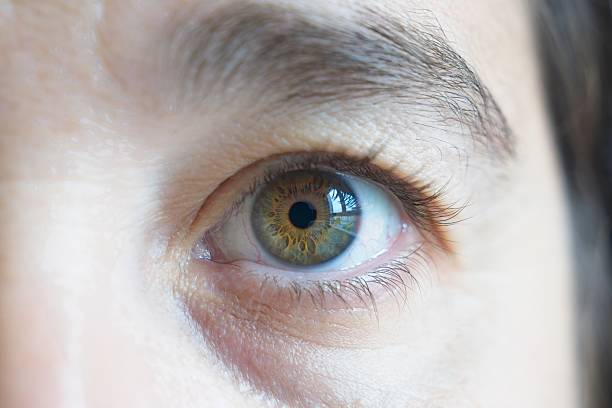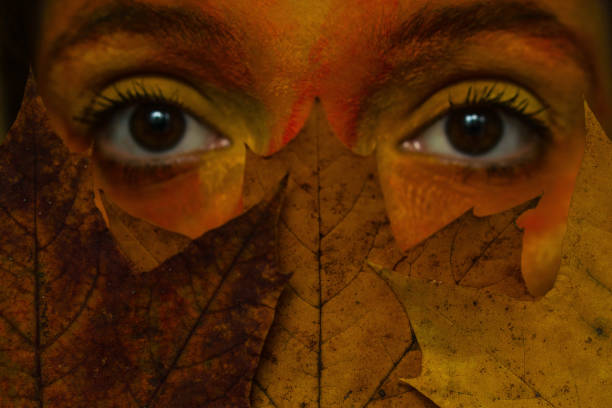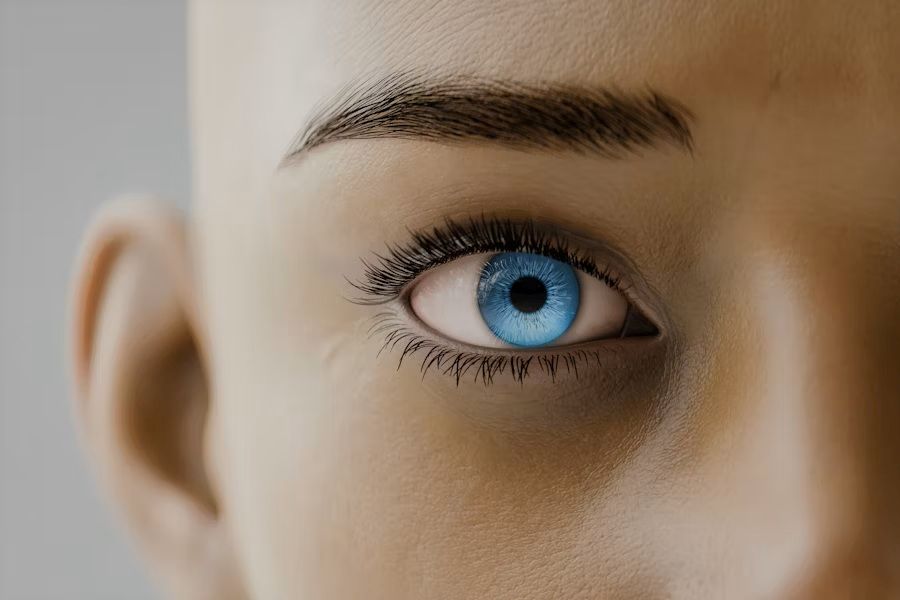Your Cart is Empty
The Fascinating World of Eye Blinking: Frequency, Function, and Focus

Have you ever wondered how many times you blink in a day? Or why we blink at all? This article delves into the intriguing realm of eye blinking, exploring its frequency, the roles of key eye structures, and techniques to maintain a steady gaze for iris photography. Whether you're curious about your own blinking habits or seeking to capture the perfect iris shot, read on to discover the secrets behind this essential eye function.
How Many Times Do We Blink Each Day?
The average person blinks between 15 to 20 times per minute. This seemingly small number adds up quickly throughout the day. Let's do the math:
15 blinks/minute x 60 minutes/hour x 16 waking hours = 14,400 blinks per day
That's right – the typical person blinks around 14,400 times every single day! This number can vary based on factors such as:
1. Age
2. Environment (humidity, air quality)
3. Visual activities (reading, screen time)
4. Health conditions
5. Medications
Some studies suggest that people blink less frequently when engaged in visually demanding tasks, such as reading or using a computer. This reduced blink rate can contribute to eye strain and dry eyes, highlighting the importance of regular breaks and proper eye care.
The Role of the Pupil and Iris in Blinking
While blinking primarily involves the eyelids, the pupil and iris play crucial roles in overall eye function and protection. Let's examine these structures and their relationship to blinking:
The Pupil:
The pupil is the dark central opening in the eye that allows light to enter. It appears black because light entering the pupil is absorbed by the tissues inside the eye. During the blinking process:
1. The pupil constricts slightly, helping to protect the retina from excess light exposure.
2. Blinking helps redistribute the tear film across the surface of the eye, including the pupil area.
3. The quick darkness during a blink allows the pupil to adjust more rapidly to changing light conditions.
The Iris:
The iris is the colored portion of the eye surrounding the pupil. It contains muscles that control pupil size and plays a vital role in regulating the amount of light entering the eye. In relation to blinking:
1. The iris helps protect the internal structures of the eye during blinking.
2. Blinking assists in maintaining the health of the iris by spreading moisture and removing debris.
3. The contrasting colors and patterns of the iris become more visible immediately after blinking, as the tear film enhances its appearance.
While the pupil and iris don't directly control blinking, they work in harmony with this reflex to maintain optimal eye health and vision.
Techniques to Avoid Blinking During Iris Photography
Capturing a clear, detailed image of the iris can be challenging due to our natural blinking reflex. Whether you're using a professional camera or a smartphone, here are some techniques to help you maintain a steady, blink-free gaze:
1. Controlled Breathing:
Practice slow, deep breathing to relax your facial muscles and reduce the urge to blink. Take a deep breath before the photo and exhale slowly during the capture.
2. The "Wide-Eyed" Technique:
Gently widen your eyes just before the photo is taken. This creates a temporary delay in the blinking reflex, giving you a few extra seconds of blink-free time.
3. Eye Drops:
Use preservative-free artificial tears about 10-15 minutes before the photo session. This can help reduce eye irritation and the need to blink.
4. Blinking Reset:
Blink rapidly several times just before the photo is taken. This can temporarily satisfy your eye's need to blink and buy you a few seconds of a steady gaze.
5. Focus on a Specific Point:
Choose a fixed point slightly above the camera lens to focus on. This can help steady your gaze and reduce the urge to blink.
6. Gradual Exposure:
If using bright lights for the photo, gradually increase the brightness to allow your eyes to adjust, reducing the reflex to blink in response to sudden light changes.
7. Timing is Key:
Coordinate with the photographer to capture the image immediately after you've completed a natural blink. This maximizes the time before your next involuntary blink.
8. Practice Makes Perfect:
Spend time practicing these techniques in front of a mirror or with a friend before the actual photo session.
9. Stay Hydrated:
Drink plenty of water before the session to ensure your eyes are well-hydrated, reducing irritation and the need to blink.
10. Minimize Distractions:
Create a calm, quiet environment for the photo session to help you maintain focus and reduce unnecessary blinking.
Remember, while these techniques can help, it's essential not to strain your eyes excessively. If you feel discomfort, take a break and try again after resting your eyes.
Conclusion
From the astounding 14,400 daily blinks to the intricate interplay between blinking, the pupil, and the iris, our eyes are truly remarkable organs. Understanding these processes not only satisfies our curiosity but also helps us appreciate the complexity of human vision.
Whether you're preparing for iris photography or simply looking to optimize your eye health, being aware of your blinking habits and eye functions can make a significant difference. By implementing the techniques discussed, you can capture stunning iris images while maintaining good eye care practices.
So the next time you blink – which will probably be in the next few seconds – take a moment to marvel at this essential, yet often overlooked, aspect of human physiology. Your eyes, with their constantly adjusting pupils and vibrant irises, are working tirelessly to keep your vision clear, protected, and ready for whatever visual challenges come your way.
Leave a comment
Comments will be approved before showing up.




